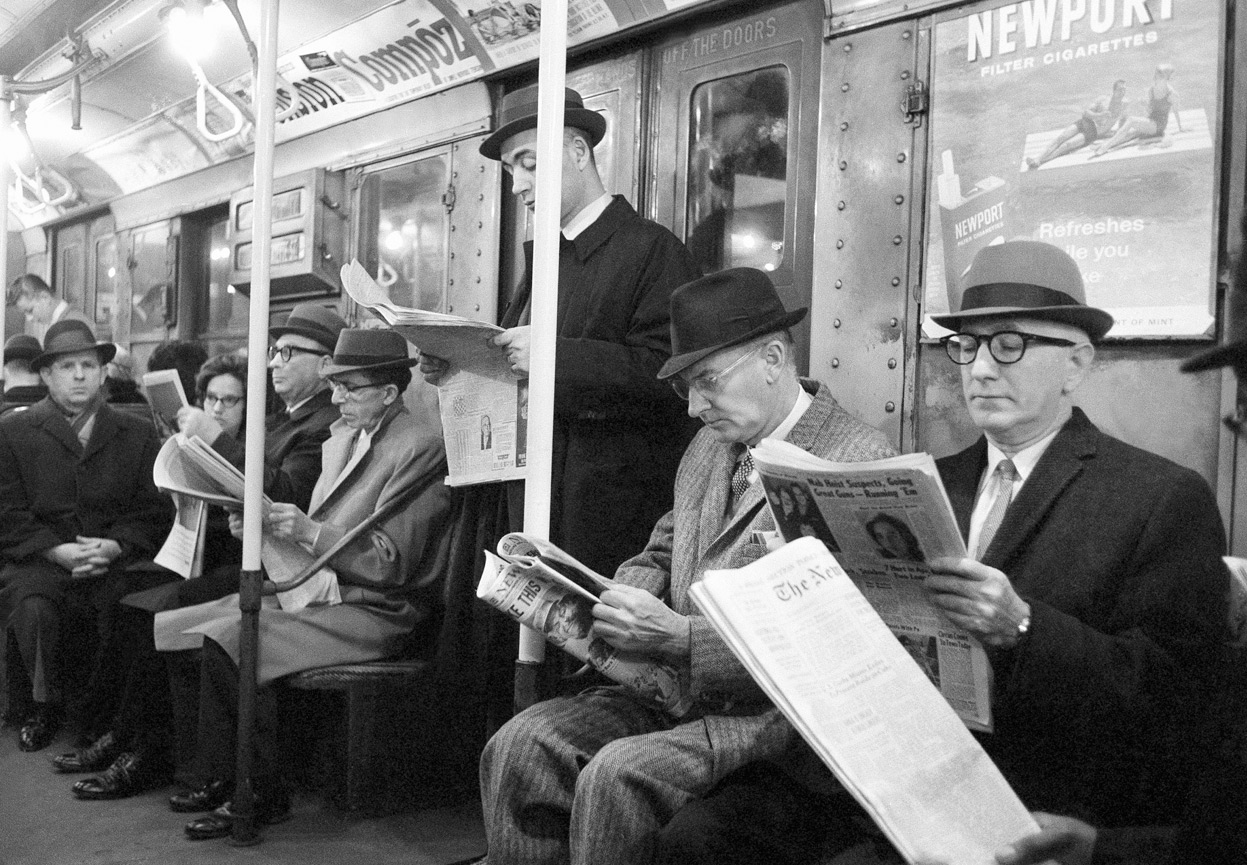People wearing hats used to sit in subway cars reading newspapers. First the hats disappeared, then the papers.
Anyone who’s lived on both sides of peak-print news knows the industry has shrunk precipitously as the Internet enjoyed its meteoric rise. If it were as simple as trading one medium for another, that would be no problem. But in the last few decades of good health for newspapers, the industry was propped up on print ads and classifieds and such, the cover price no longer able to float the enterprise. Once those crutches were yanked away by new tools, the business wasn’t really a going concern anymore. Online journalism hasn’t come close to filling the void, so there’s more information than ever, but the day is largely ruled by free-floating headlines, “citizen journalists,” soundbites and 140 characters.
From Jessica Conditt at Engadget:
Anyone reading this, an article that exists only on the internet, is aware of the dramatic shift that’s taken place in the media world since the 1990s. As internet penetration has grown, newspaper sales have dipped dramatically, as have traditional newspaper jobs. New research from the US Bureau of Labor Statistics quantifies these losses — and they’re hefty.
Between 1990 and 2016, the newspaper publishing industry shrunk by nearly 60 percent, from roughly 458,000 jobs to 183,000 jobs, the bureau found. In this same time, the number of internet publishing and broadcasting jobs rose from 30,000 to 198,000. In just under three decades, the newspaper industry has transformed from a media juggernaut into a secondary form of communication, and there are no signs this trend will reverse any time soon.•

